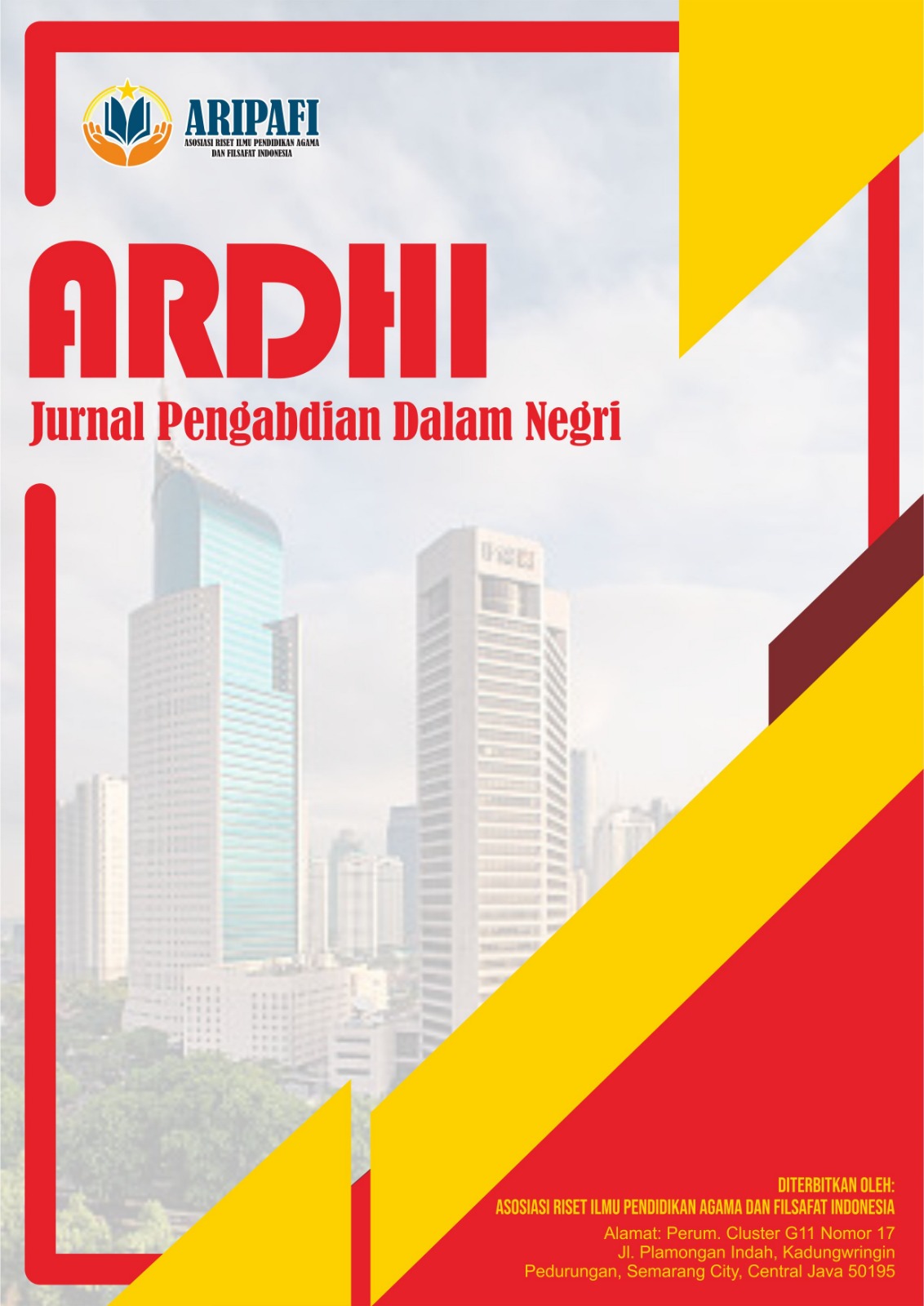Pemanfaatan Biji Cempedak (Artocarpus Champeden) dalam Produksi Tempe Inovatif : Program Edukasi Mahasiswa Berbasis Kearifan Lokal
DOI:
https://doi.org/10.61132/ardhi.v2i6.950Keywords:
Cempedak, Seed, Innovation, Local,, WisdomAbstract
Tempe is an inherent food source for Indonesians, with a large number of tempe consumers in the local community. This community service program aims to improve students' understanding and skills in processing cempedak seeds into tempe, including drying methods that allow long-term storage. This activity was carried out from July to November 2024. This activity was carried out in several stages, namely the preparation stage, the implementation stage, and the completion stage. The program on the utilization of cempedak seeds in tempeh production shows promising potential as a food innovation based on local resources. The success rate of this program is not only measured from the production aspect, but also from the transfer of knowledge to students who act as agents of change in alternative food development. Some of the advantages of this activity program are that it provides an alternative utilization of cempedak seed waste into products with nutritional value. In addition, the production cost is relatively affordable compared to the use of soybean. The disadvantage of this program is that the availability of raw materials depends on the cempedak harvest season.
Downloads
References
Astuti, M., Rahman, S., & Widodo, A. (2023). Nutritional Value and Health Benefits of Traditional Indonesian Tempeh: A Comprehensive Review. Journal of Food Science and Nutrition, 8(2), 124–138.
Badan Pusat Statistik. (2023). Statistik Konsumsi Pangan Indonesia 2023.
Castanheira, I., Serôdio, A., Moreira, T., & Motta, C. (2020). Tempeh’s Contribution to the Intake Vitamins B12, Folates and Essential Amino Acids. Current Developments in Nutrition, 4, nzaa052_010. https://doi.org/10.1093/cdn/nzaa052_010
Dwi Nur Aini Dahlan. (2020). Analisis Kandungan Serat Kasar Dalam Selai Cempedak Yang Diperam Secara Tradisional Dengan Diperam Menggunakan Karbid. Jurnal Tarbiyah & Ilmu Keguruan (JTIK) Borneo, 1, 63–71.
Kementerian Riset dan Teknologi. (2023a). Program Pengembangan Pangan Berbasis Kearifan Lokal 2023-2024.
Kementerian Riset dan Teknologi. (2023b). Program Pengembangan Pangan Berbasis Kearifan Lokal 2023-2024.
Keuth, S., & Bisping, B. (1994). Vitamin B12 production by Citrobacter freundii or Klebsiella pneumoniae during tempeh fermentation and proof of enterotoxin absence by PCR. Applied and Environmental Microbiology, 60(5), 1495–1499. https://doi.org/10.1128/aem.60.5.1495-1499.1994
Kusuma, R., Pratama, F., & Wijaya, H. (2023). Economic Value Analysis of Artocarpus Seeds Processing in Indonesian Food Industry. Journal of Agricultural Economics, 15(3), 278–289.
Nurul Haji Fitriani. (2015). Uji kualitas organoleptik yoghurt berbahan baku susu biji cempedak (Artocarpus Champenden) berdasarkan lama waktu fermentasi. IAIN Palangka Raya.
Pratama, R., Sutanto, A., & Sutanto, A. (2023). Optimization of Fermentation Process in Artocarpus Seeds Tempeh Production. International Journal of Food Science, 12(4), 567–580.
Rahardjo, S., & Sulistyo, J. (2022). Food Security Challenges and Opportunities in Indonesia: A Review. Indonesian Journal of Agriculture, 14(2), 89–102.
Rahman, A., Wijaya, H., & Santoso, B. (2023). Bioactive Compounds and Antioxidant Properties of Fermented Artocarpus Seeds. Journal of Functional Foods, 18(4), 234–245.
Rokhan Bukhari, M. (2022). Pelatihan Fermentasi Tempe. BARAKATI: Journal of Community Service, 01, 10–14.
Santoso, A., Widodo, R., & Pratama, F. (2021). Nutritional Composition Analysis of Artocarpus champeden Seeds. International Journal of Food Science and Technology, 11(3), 178–189.
Shanti, R., Komala, K., Azhar, I. H., & Shalihati, F. (2023). Tempe: Indonesian Vegan Protein for the World (pp. 185–195). https://doi.org/10.2991/978-94-6463-144-9_18
Stephanie, L., Rahman, A., & Kusuma, H. (2024). Recent Advances in Understanding Microbial Communities in Traditional Tempeh Fermentation. Journal of Applied Microbiology, 126(1), 12–25.
Wahdah, R., Kusuma, H., & Pratama, F. (2022). Mineral Content Analysis of Various Artocarpus Species Seeds in Indonesia. Journal of Food Composition and Analysis, 16(2), 123–134.
Wahyudi, A., Santoso, H., & Rahman, F. (2023). Analysis of Food Waste Management in Indonesian Traditional Food Processing. Waste Management Research, 41(3), 345–356.
Wicaksono, W. A., Akinyemi, O. E., Wassermann, B., Bickel, S., Suwanto, A., & Berg, G. (2024). Traditionally produced tempeh harbors more diverse bacteria with more putative health-promoting properties than industrially produced tempeh. Food Research International, 196, 115030. https://doi.org/10.1016/j.foodres.2024.115030
Widodo, S., Pratama, R., & Kusuma, H. (2023). Local Food Development Strategy for Supporting National Food Security. Journal of Food Security, 12(1), 56–69.
Downloads
Published
How to Cite
Issue
Section
License
Copyright (c) 2024 ARDHI : Jurnal Pengabdian Dalam Negri

This work is licensed under a Creative Commons Attribution-ShareAlike 4.0 International License.





